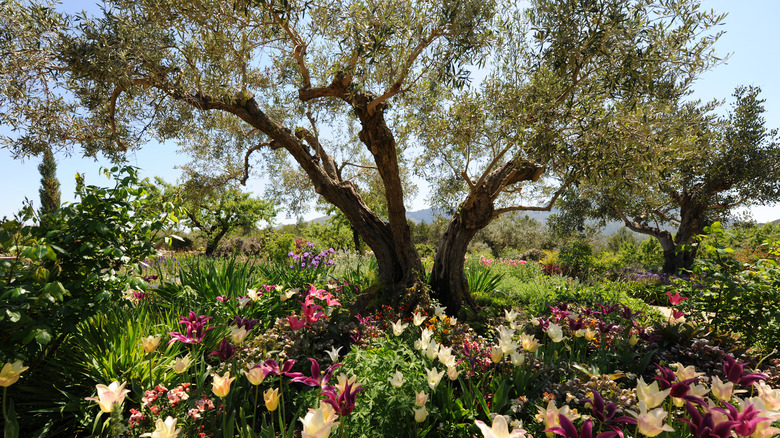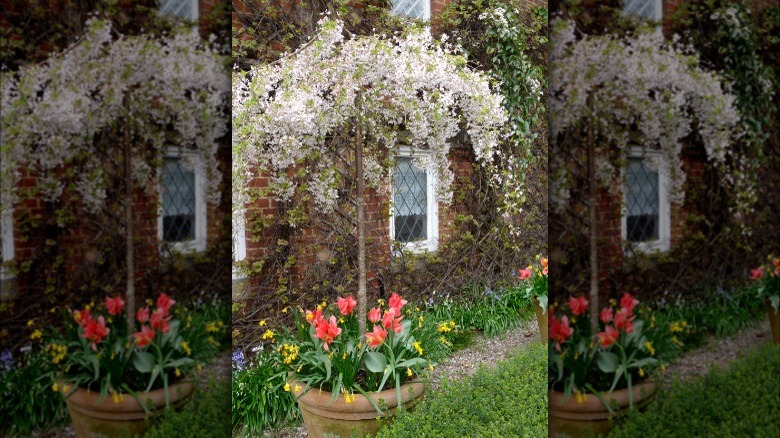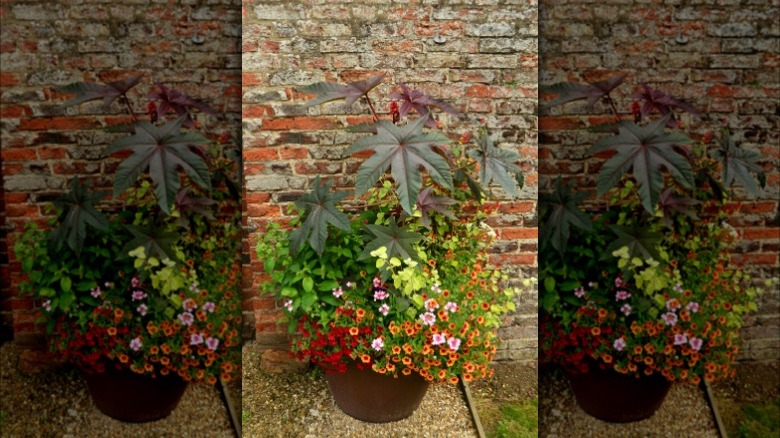What Is Underplanting And How Can You Use It To Add Variety To Your Garden?
When strolling around your favorite plant store, you're more likely to seek greenery that looks lush and full from the base to the very top leaf. This typically indicates a plant is healthy and thriving, but it also creates a more eye-catching sight in your garden. However, if you have a tree or stalky species, especially larger ones that grow outdoors, you may feel like it's missing that lushness at the bottom.
This is where underplanting comes into play. This concept is often seen in nature and landscaping, where people add low-lying and wide-spreading plants like grasses, mosses, stonecrop, and any variety of creeping flowers to fill out the otherwise bare patch underneath a large tree. This gardening trick can extend to potted plants and adds lovely color and textural variety between the original plant and its complimentary underplant. This tactic can also help prevent weeds from growing up through the base, which can be a concern if you have larger outdoor container plants.
Underplanting basics
Underplanting can be done anywhere — landscaping, patio container plants, and even houseplants. This can be as simple as adding some hostas underneath a large tree, or you could go all out by employing contrasting colors and textures with various plants and flowers to create a dimensional and layered scene.
For example, potted palm trees are stunning on their own, but their trunks can get a little bland looking the taller they get. This is only amplified by the brown soil at the bottom. So, do your tree and the pot it's planted in some justice by adding a beautiful and colorful assortment of low-lying flowers at the bottom. Or, take advantage of the height provided by your container and add some trailing plants and flowers. The most significant cause for concern with underplanting is that some species may compete for resources or be incompatible. For example, if you have a drought-tolerant base plant, don't add underplants that need lots of water, and vice versa. Also, it's crucial to ensure they have similar sun, fertilization, soil, and moisture requirements.
How to underplant
Aside from looking beautiful, underplanting can offer some significant health benefits for the original plant. For instance, in addition to fending off pesky weeds, underplants provide a helpful dose of organic matter to the soil as they shed old leaves or flowers, strengthening the health of all the plants in a container garden.
Thankfully, underplanting is remarkably simple. Before you start, however, make sure your main plant doesn't need to be repotted, as it will be challenging to do so once done. Look for a miniature, young version of whatever you're underplanting so it has room to grow, and dig a few holes around the perimeter of the pot or container. Add some fertilizer or compost to the hole, as well as any soil additives or substrates the underplants may need to thrive. Then, simply add the new plants and cover them back with soil. Ground cover planting can be achieved in the same way.


